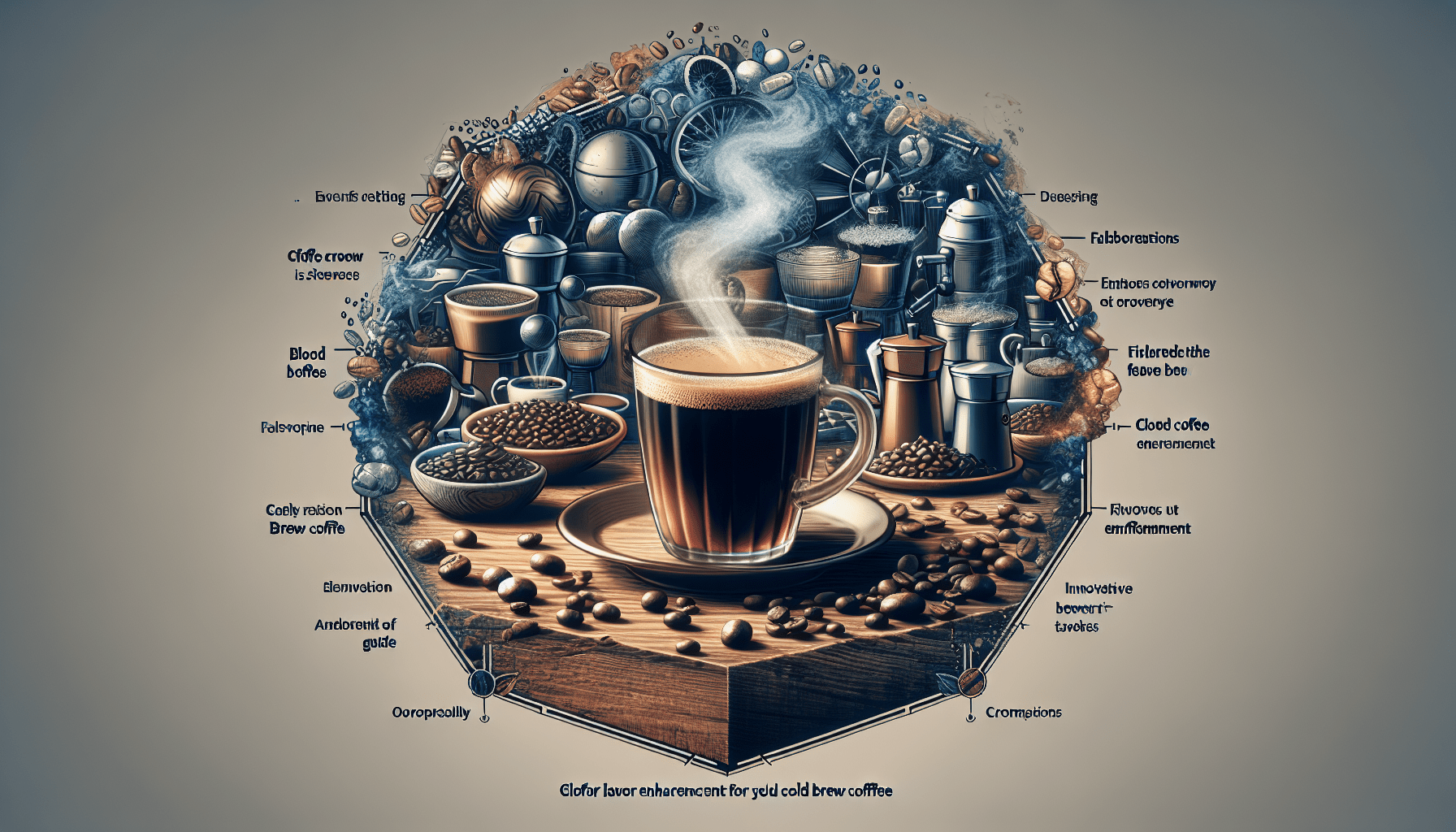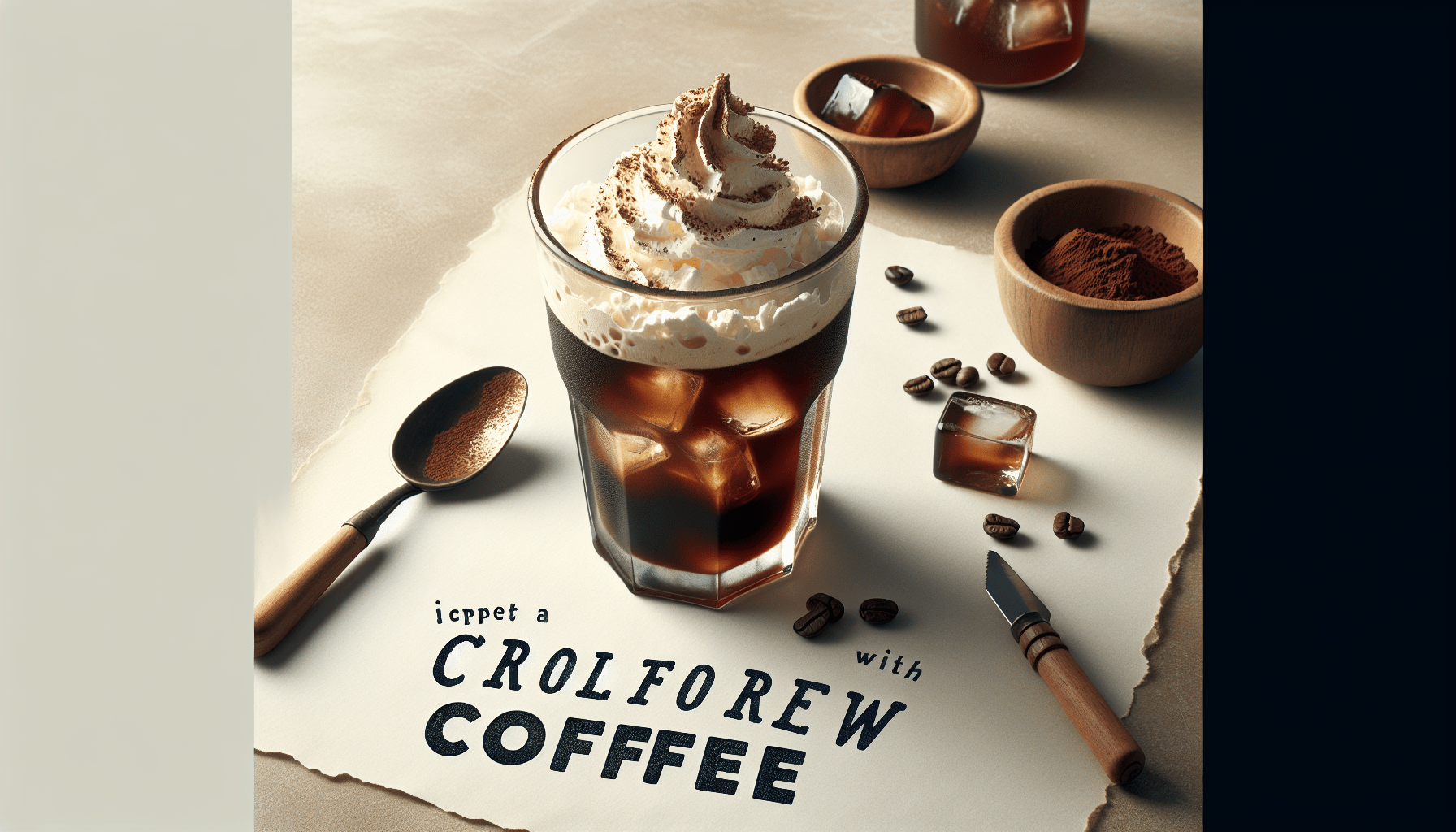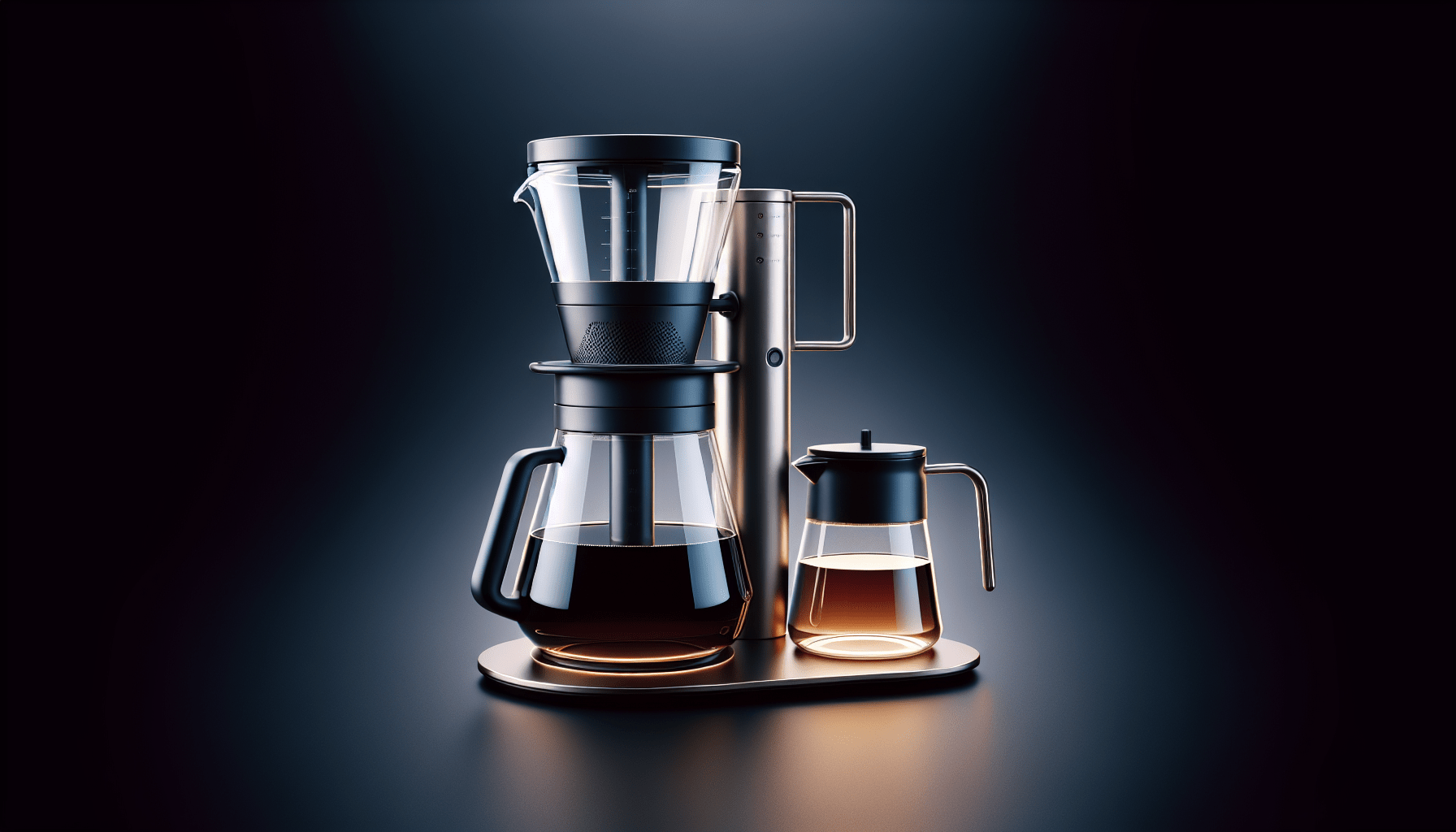If you’re looking to elevate the taste of your cold brew made with a cold brew maker, look no further. We all love the smooth and refreshing qualities of a perfectly brewed cup of cold coffee, but what if we could take it up a notch? In this article, we’ll explore some simple yet effective tips that will help you enhance the flavor of your cold brew, making every sip an indulgent experience for your taste buds. So, grab a cold brew maker and get ready to unlock a world of delicious possibilities. Cold brew coffee has become increasingly popular for its smooth and rich flavor. However, achieving that perfect cup of cold brew requires more than just using a cold brew maker. To enhance the flavor of your cold brew, there are several factors to consider. From choosing the right coffee beans to experimenting with brewing techniques, here are some tips to help you elevate your cold brew game.
Choosing the right coffee beans
The foundation of a great cold brew starts with high-quality coffee beans. Look for beans that are specifically labeled as “cold brew” or “coarse grind.” These beans are typically roasted to a medium or dark level, which brings out the deep flavors that are characteristic of cold brew. Opting for high-quality beans ensures that you’ll get the best flavor and results in your cold brew.
Consider the roast level
When choosing coffee beans for your cold brew, consider the roast level. While medium to dark-roasted beans are commonly used for cold brew, you can experiment with different roast levels to suit your taste preferences. Lighter roasts may result in a brighter and more acidic cold brew, while darker roasts offer a rich and bold flavor profile. Don’t be afraid to try different roast levels to find your perfect balance.
Experiment with different origins
Another way to enhance the flavor of your cold brew is by exploring coffee beans from different origins. Beans sourced from different countries bring distinct flavor profiles to your brew. For example, beans from Ethiopia may have fruity and floral notes, while beans from Colombia may have a smoother and nuttier taste. Trying coffee beans from various origins adds complexity and depth to your cold brew, allowing you to discover new flavors.
Grinding the coffee beans
Grinding your coffee beans just before brewing is essential for extracting the optimal flavors. Using a burr grinder is recommended for achieving a consistent coarse grind, which is ideal for cold brew. Burr grinders crush the beans rather than chopping them, resulting in a more uniform grind size. This ensures even extraction and a well-balanced flavor in your cold brew.
Grind beans to a coarse consistency
When grinding coffee beans for cold brew, aim for a coarse consistency. Finer grounds can lead to a bitter and over-extracted brew. Coarse grounds allow for a slower extraction process, resulting in a smoother and less acidic cold brew. Experiment with the grind size to find the perfect balance for your taste preferences.
Avoid pre-ground coffee
While convenience may tempt you to use pre-ground coffee, it’s best to avoid it for cold brew. Pre-ground coffee is often too fine for cold brew and can lead to a murky and bitter brew. Grinding your coffee beans fresh ensures the best flavor and aroma in your cold brew. Invest in a good grinder and enjoy the benefits of freshly ground coffee.
Finding the right water-to-coffee ratio
The water-to-coffee ratio plays a crucial role in determining the strength and flavor of your cold brew. Following a recommended ratio is a good starting point, but don’t be afraid to adjust it according to your taste preferences. As a general guideline, a ratio of 1 part coffee to 4 parts water produces a strong and robust cold brew. However, you can add more water if you prefer a milder taste.
Adjust to taste preferences
Everyone’s taste preferences are different, so don’t hesitate to adjust the water-to-coffee ratio to suit your unique palate. If you find your cold brew too intense, add more water to dilute it. On the other hand, if you prefer a stronger brew, decrease the amount of water. Experimenting with different ratios allows you to customize your cold brew to your desired taste profile.
Consider the strength of the coffee concentrate
Cold brew is typically brewed as a concentrate, which means it needs to be diluted before serving. The strength of the concentrate can impact the overall flavor of your cold brew. Some people prefer a stronger concentrate, while others prefer a milder version. Consider how you plan to dilute your cold brew and adjust the strength of the concentrate accordingly.
Water quality matters
Just as with any coffee brewing method, water quality plays a significant role in the final taste of your cold brew. Using filtered water can help remove impurities and ensure a cleaner flavor. Avoid using distilled water, as it lacks minerals that contribute to the extraction process. Additionally, pay attention to the mineral content of your water. Some minerals, such as magnesium and calcium, can enhance the flavor of your cold brew.
Use filtered water
Investing in a water filtration system or using filtered water can significantly improve the taste of your cold brew. Filtered water removes impurities and provides a clean canvas for the flavors of your coffee beans to shine through. It’s a simple but effective step to elevate the overall quality of your cold brew.
Avoid using distilled water
While distilled water may seem like a good option for brewing coffee, it’s not recommended for cold brew. Distilled water lacks essential minerals that contribute to the extraction process and can result in a flat and uninteresting flavor. Opt for filtered or spring water instead.
Take note of mineral content
Another aspect to consider when it comes to water quality is the mineral content. Some minerals, such as magnesium and calcium, can enhance the flavor of your cold brew. Pay attention to the mineral composition of your water and experiment with different sources to find the perfect balance.
Brewing time and temperature
The brewing time and temperature can greatly influence the flavor of your cold brew. While there are general guidelines to follow, don’t be afraid to experiment to find your preferred brewing parameters.
Experiment with brewing time
Typically, cold brew is steeped for 12 to 24 hours. However, you can adjust the brewing time to your liking. A longer brewing time tends to result in a stronger and bolder flavor, while a shorter time may produce a milder brew. Experiment with different brewing times to find the perfect balance of flavor and strength for your cold brew.
Consider cold brew steeping temperature
Cold brew is known for its low-temperature extraction, which contributes to its smooth and less acidic flavor profile. However, you can experiment with different steeping temperatures to achieve different results. Some cold brew enthusiasts prefer a slightly higher brewing temperature for a more pronounced flavor. Test different temperatures within the cold range (around 40°F to 50°F) and see which one works best for you.
Try different steeping methods
There are various steeping methods you can explore to enhance the flavor of your cold brew. Different methods, such as immersion brewing or slow drip, can yield different flavor profiles. Experiment with different techniques and find the one that suits your taste preferences. Each method may bring out unique nuances and flavors in your cold brew.
Using flavor infusions
To add an extra dimension of flavor to your cold brew, consider using flavor infusions during brewing. This can be done by adding spices or herbs to your coffee grounds before brewing.
Add spices or herbs during brewing
Spices and herbs can infuse your cold brew with interesting and aromatic flavors. Cinnamon sticks, cardamom pods, or even a pinch of black pepper can add depth and complexity to your brew. Experiment with different combinations and find the flavor profile that appeals to you.
Experiment with fruit or citrus peels
Fruit and citrus peels can add a refreshing twist to your cold brew. Orange or lemon peels infused during brewing can impart a bright and citrusy flavor. You can even try adding sliced fruits like berries or citrus segments to infuse your cold brew with their natural sweetness.
Try flavored syrups or extracts
For those who prefer a sweeter and more indulgent cold brew, flavored syrups or extracts can be added during brewing. Vanilla, caramel, or hazelnut syrups can provide a delicious and decadent flavor profile. Alternatively, you can use natural extracts like almond or coconut to add a subtle hint of flavor. Be mindful of the sweetness level and adjust according to your taste.
Cold brew concentrate storage
If you find yourself with leftover cold brew concentrate, proper storage is essential to maintain its flavor and quality.
Use airtight containers
When storing cold brew concentrate, use airtight containers to prevent oxidation and maintain freshness. Mason jars, glass bottles, or specifically designed cold brew containers are excellent options. Make sure to seal the containers tightly to preserve the taste and aroma of your cold brew.
Store in the refrigerator
Cold brew concentrate should be stored in the refrigerator to slow down the oxidation process. The cold temperature helps maintain the flavor and extends the shelf life of your cold brew. Keep in mind that cold brew concentrate can typically be refrigerated for up to a week without compromising its taste. However, it’s best to consume it within a few days for the best flavor.
Avoid keeping it for too long
While cold brew concentrate can be stored for a few days in the refrigerator, it’s best to avoid keeping it for too long. As time passes, the flavor may deteriorate, and oxidation can occur even in the refrigerator. To ensure the best taste and quality, it’s recommended to consume your cold brew concentrate within a week of brewing.
Dilution and serving
Dilution is an essential step in preparing your cold brew for consumption. Experimenting with dilution ratios allows you to customize the strength of your cold brew to your liking.
Experiment with dilution ratios
Finding the perfect dilution ratio is a matter of personal preference. Some prefer a strong and concentrated cold brew, while others like a more mellow and diluted flavor. Start with a 1:1 ratio of cold brew concentrate to water and adjust according to your taste. You can add more or less water until you achieve your desired strength.
Serve over ice or with milk
Cold brew is often enjoyed over ice for a refreshing and chilled experience. The ice not only cools down the brew but also dilutes it slightly, making it more palatable. If you prefer a creamier texture, consider adding milk or a dairy alternative of your choice. Cold brew lends itself well to milk-based beverages, such as cold brew lattes or iced coffees. Experiment with different serving styles to find what appeals to you.
Consider adding sweeteners or flavorings
If you prefer a sweeter cold brew, you can add sweeteners or flavorings to your taste. Simple syrup, honey, or agave nectar are common choices for adding sweetness. Additionally, you can experiment with flavoring agents like chocolate syrup, cinnamon, or nutmeg to enhance the overall taste experience. Be mindful of the amount you add, as a little can go a long way.
Experimenting with brewing techniques
To truly elevate your cold brew game, consider exploring different brewing techniques. Trying alternative methods can uncover new flavors and textures in your cold brew.
Try the Japanese method
The Japanese method of cold brewing involves using a slow and precise drip process. The result is a delicate and nuanced cold brew with a smooth mouthfeel. This method requires specialized equipment, such as a slow-drip tower, but it can be a fascinating way to experiment with the flavors of your coffee beans.
Explore the ‘slow drip’ technique
Similar to the Japanese method, the ‘slow drip’ technique involves a slow and controlled extraction process. This method can be achieved using a simple setup with a drip device, allowing you to drip cold water over the coffee grounds over an extended period. The slow drip technique enhances the clarity and sweetness of the cold brew, giving you a different perspective on its flavor.
Experiment with different cold brew makers
There are various cold brew makers available in the market, each offering a unique brewing experience. Explore different cold brew makers, such as immersion brewers, Dutch presses, or cold brew bags, to discover which one produces the best flavor for your taste buds. Each method brings its nuances to the extraction process, resulting in different flavor profiles.
Cleaning and maintenance
Proper cleaning and maintenance of your cold brew maker are essential for consistently good-tasting cold brew.
Clean the cold brew maker regularly
After each use, make sure to clean your cold brew maker thoroughly. Coffee oils can accumulate over time, leading to a rancid and unpleasant flavor in your brews. Follow the manufacturer’s instructions for cleaning your specific cold brew maker to ensure that it remains in excellent condition.
Avoid buildup of coffee oils
Coffee oils can build up over time, creating a residue that affects the taste of your cold brew. Regular cleaning and maintenance prevent the buildup of oils, ensuring that your cold brew maker continues to produce fresh and flavorful brews.
Follow manufacturer’s instructions
Each cold brew maker may have specific care instructions, so it’s essential to follow them. This ensures that your cold brew maker remains in optimal condition and consistently produces high-quality cold brew. Whether it’s disassembling the parts for cleaning or descaling the equipment, make sure to refer to the manufacturer’s instructions for the best results.
By following these tips and techniques, you can significantly enhance the flavor of your cold brew made with a cold brew maker. From selecting the right coffee beans and experimenting with different brewing methods to adjusting the water-to-coffee ratio and storage techniques, there are countless ways to elevate your cold brew experience. So grab your cold brew maker and start exploring the rich and smooth flavors of this beloved beverage. Cheers to delicious cold brew!




